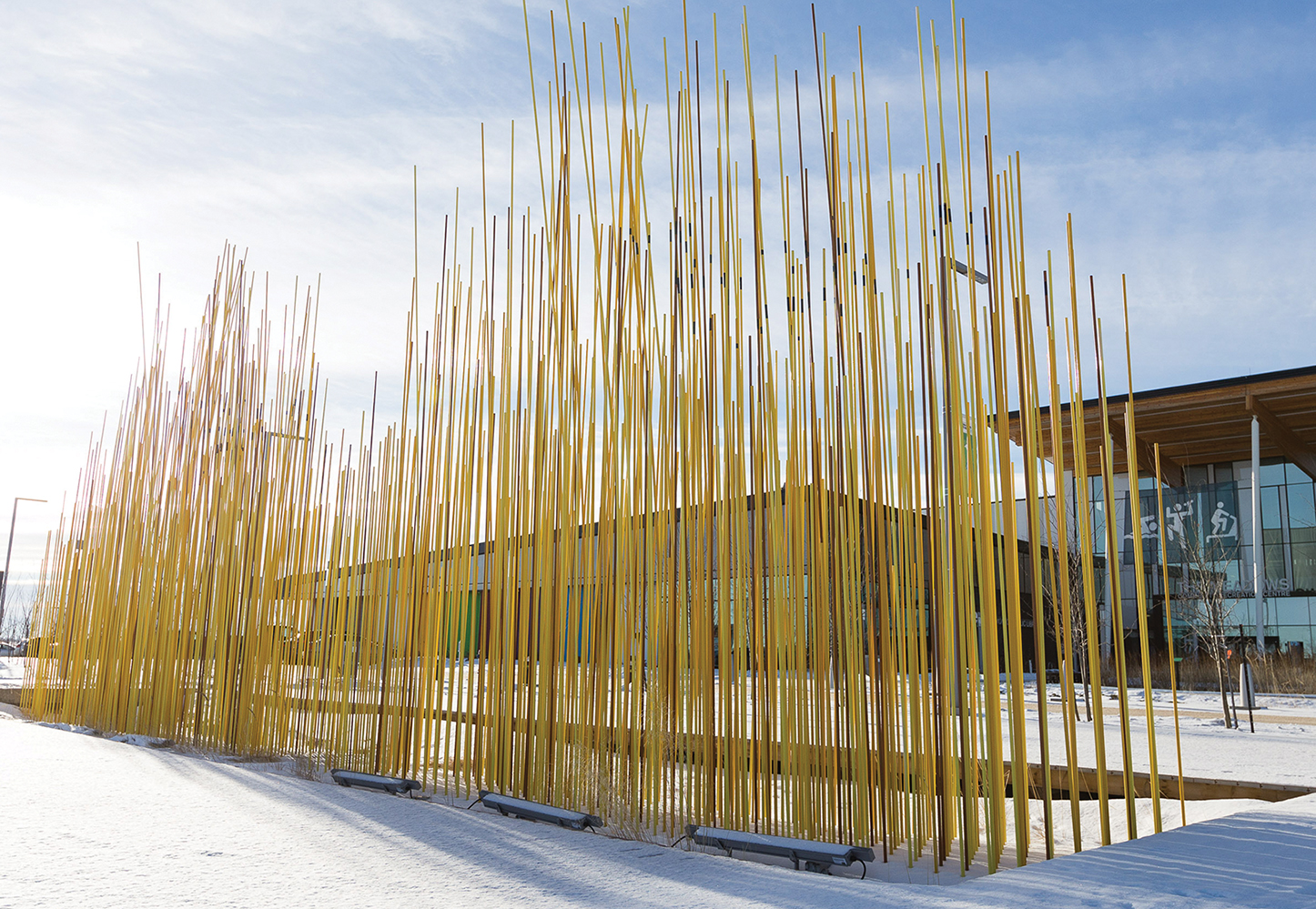When it comes to Alberta’s food culture, nothing is more basic – and important – than our grain production. It is the foundation for our agricultural industry; without grain, there would be no feed for our beef and dairy cattle. There would be no need for the elevators that became such an important part of the prairie landscape. And, what exactly would fill those blue Alberta rail cars that snake across the province?
So, an artist’s celebration of wheat is maybe the best way to wrap up Avenue‘s food themed issue; located just outside the Meadows Recreation Centre in the city’s southeast, “Wheatfield With Crows” is an installation made up of rods that are designed to sway in the wind.
Egypt-born artist Konstantin Dimopoulous now calls Seattle home. “Wheatfield With Crows,” is one of many examples of his three-dimensional art that’s based on the idea of using a series of rods, planted into the ground, that move.
Go to Cedar Rapids, Iowa, and you’ll find “Golden Field,” another collection of golden bars. In Canberra, Australia, they’re collected into a pattern that’s titled “Dancers on a Lakefront.” And, because so many Edmontonians vacation in Palm Springs, it’s worth noting that, when there, you should look for “Red Echo,” where the rods look like they’re exploding out of the desert floor.
If you go around to the recreation centre’s rear entrance, you’ll see two plots that are filled with rods in varying shades of yellow and brown. Time hasn’t been very good to the installation; even though “Wheatfield With Crows” was only finished in 2014, there are a lot of bars that have chipped paint. It could use a bit of love.
The bars aren’t all of the same length; that’s to make sure it looks like a wheat field, with stalks of various sizes moving to and fro with the breeze. The bars move, and some of them have black spots; when you pull back, it’s supposed to look like crows, or maybe the shadows of crows.
Of course, the piece takes inspiration from Van Gogh’s famous “Wheatfield With Crows,” with thick brushstrokes of gold against a blue sky, which he completed in 1890.
